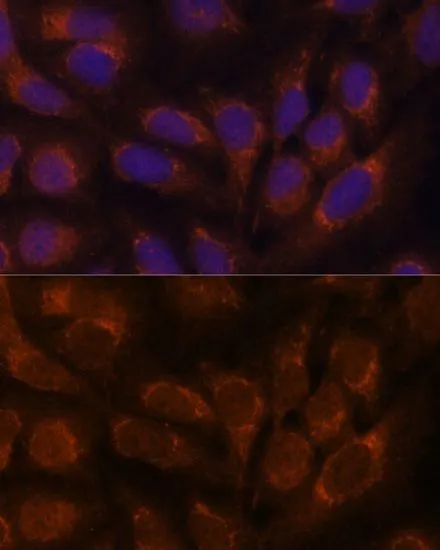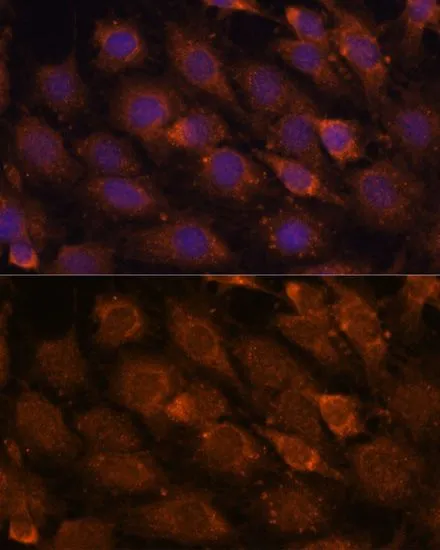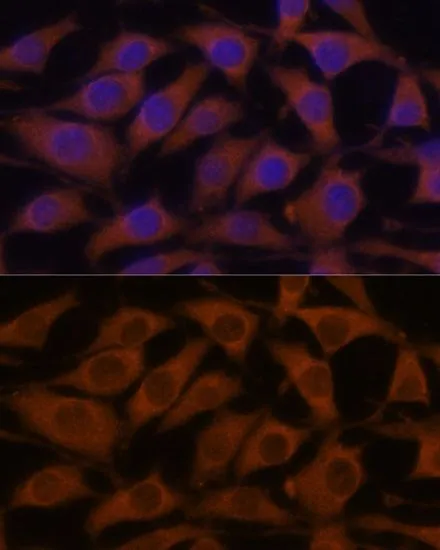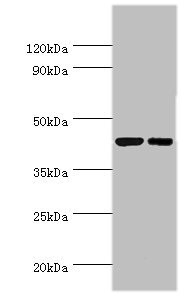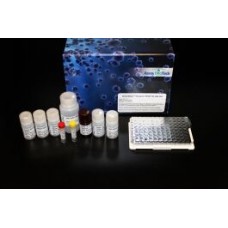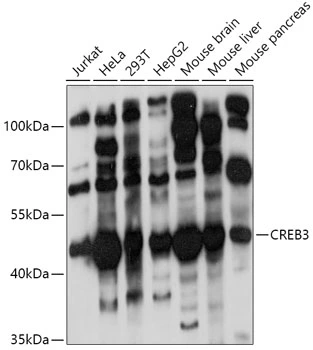
WB analysis of various sample lysates using GTX65817 LZIP antibody. Dilution : 1:1000 Loading : 25microg per lane
LZIP antibody
GTX65817
ApplicationsImmunoFluorescence, Western Blot, ImmunoCytoChemistry
Product group Antibodies
TargetCREB3
Overview
- SupplierGeneTex
- Product NameLZIP antibody
- Delivery Days Customer9
- Application Supplier NoteWB: 1:500 - 1:2000. ICC/IF: 1:10 - 1:100. *Optimal dilutions/concentrations should be determined by the researcher.Not tested in other applications.
- ApplicationsImmunoFluorescence, Western Blot, ImmunoCytoChemistry
- CertificationResearch Use Only
- ClonalityPolyclonal
- ConjugateUnconjugated
- Gene ID10488
- Target nameCREB3
- Target descriptioncAMP responsive element binding protein 3
- Target synonymsbasic leucine zipper protein; cyclic AMP response element (CRE)-binding protein/activating transcription factor 1; cyclic AMP-responsive element-binding protein 3; leucin zipper proitein; LUMAN; LZIP; sLZIP; small leucine zipper protein; transcription factor LZIP-alpha
- HostRabbit
- IsotypeIgG
- Protein IDO43889
- Protein NameCyclic AMP-responsive element-binding protein 3
- Scientific DescriptionThis gene encodes a transcription factor that is a member of the leucine zipper family of DNA binding proteins. This protein binds to the cAMP-response element and regulates cell proliferation. The protein interacts with host cell factor C1, which also associates with the herpes simplex virus (HSV) protein VP16 that induces transcription of HSV immediate-early genes. This protein and VP16 both bind to the same site on host cell factor C1. It is thought that the interaction between this protein and host cell factor C1 plays a role in the establishment of latency during HSV infection. This protein also plays a role in leukocyte migration, tumor suppression, and endoplasmic reticulum stress-associated protein degradation. Additional transcript variants have been identified, but their biological validity has not been determined.[provided by RefSeq, Nov 2009]
- Storage Instruction-20°C or -80°C,2°C to 8°C
- UNSPSC12352203

